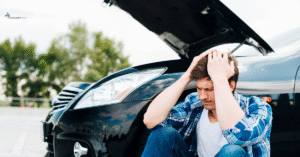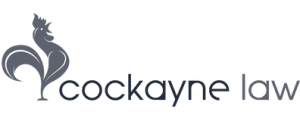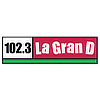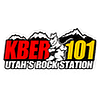What Is A Car Accident? All You Need To Know About It

The normal day that you expected can be turned on its head with the suddenness of a car accident. One moment, you are on I-15 near Point of the Mountain or merging onto Bangerter Highway. And, while the next is a jarring of metal and ringing ears and a thousand questions at once. Higher likelihood of crashing with snow in Parleys Canyon, sudden summer storms on I-80, and heavy city traffic in the state of Utah.
We have written this guide in plain English to help answer what a car accident is, the most common types, why they happen, things you can claim after in Utah, and how a car accident attorney can help you put your life back together. It will help you up with easy steps, simple checklists, and practical tips to stay safe. All this to keep your vehicle healthy and protect your rights.
Key Points You Should Know
- Safety and medical care come first
- Photos and witness names help claims
- Every crash has unique facts
- Weather and roads shape what happened
- Insurance may contest fault or costs
- Keep bills, records, and a journal
- Utah rules affect who pays first
- Quick legal advice saves time
A True Definition of Car Accident
A car accident is a sudden event, which can change your life in seconds when you get hit by another moving vehicle in one or two directions: striking it from the front, side, rear or turning over. These injuries range from a bent fender to life-threatening conditions.
A car accident is not limited to two cars hitting each other. It includes:
- A car hitting a cyclist or pedestrian on State Street
- A driver sliding into a guardrail on SR-201
- A chain reaction on I-215 with several vehicles
- A single-vehicle rollover on black ice near Sardine Canyon
- A parking lot backing crash outside a grocery store
Why the definition matters:
- Police use it when writing the official report
- Insurers use it to decide fault and coverage
- Courts use it to sort responsibility and damages
Core ideas to remember:
- These events are sudden, leaving little time to react
- Harm can be physical, emotional, and financial
- Causes may involve drivers, weather, roads, and vehicles
- Good records help you recover fair payment
Types of Car Accidents
Not all crashes look the same. The kind of impact tells you a lot about injuries, repair needs, and how a claim might play out. Utah’s winter creates slick bridges, hidden black ice, and longer stopping distances. Summer road trips bring heavier traffic through mountain passes and national park gateways. City driving adds more intersections, lane changes, and rear-end risks. Knowing the main types helps you explain what happened and spot the proof you need.
Rear-End Collisions
These happen when a vehicle strikes the back of another. They are more likely when people drive too closely, on their phones or for sudden stops on I-15. You can easily get whiplash or neck strain along with headaches. Photos of your bumper, photos of tail light damage, photos of skid marks, and the names of witnesses from other cars to help back up your claim.
Head-On Collisions
Two cars are hit head-on. They may take place when a driver crosses the center line of a two-lane road, attempts to make an unprotected left-turn (turning into oncoming traffic) or enters the highway in the wrong direction. Injuries are usually severe due to the high force.
Please gather the following proof:
- Debris field photos
- Lane markings
- Any dashcam footage
Side-Impact or T-Bone
For example, a car that hits the side of another at a light or stop sign. Vehicles have sides and do not readily absorb energy. Therefore, an occupant can suffer chest injuries, hip fractures or head trauma.
Helpful details: light timing if known, intersection layout, and statements from pedestrians or nearby drivers.
Sideswipe
Two vehicles traveling the same way scrape along their sides. This often follows a rushed lane change on I-80 or a blind-spot miss on I-215. At higher speeds, a slight tap can spin a car.
Take photos of mirror damage, door creases, lane stripes, and road gouges.
Backing and Parking Lot Collisions
Low speeds do not mean no injury. Neck and lower back pain can still follow. Back-up cameras miss angles and moving pedestrians.
Record: parking lines, posted signs, sun position, and any view obstructions.
Left-Turn and Intersection Crashes
A driver turns left across traffic and misjudges speed or distance. These are common where traffic moves fast after a light turns green.
Helpful items: turn arrows, signal phase order if known, and witness accounts from cars waiting to turn.
Road Departure
A vehicle leaves the roadway on a curve or downhill grade. Causes include speed, fatigue, or overcorrecting on gravel shoulders.
Document: shoulder condition, warning signs, and curve speed postings.
Animal Strikes
During the morning and dusk hours, deer and elk have the most activity. There are often worse outcomes when you brake in a straight line rather than when you swerve.
Note: lighting, location, and any warning signs.
The kind of collision shapes injuries, repairs, and the path of your claim. Check for injuries, call for help, take photos, and gather names. Here in Utah where weather changes rapidly, the quicker you document and get medical help on your state test, the better your next steps will be.
Common Causes of Car Accidents
Most crashes are not one mistake crashes. Typically, it is a culmination of small things that come together. Disasters only add to it, and in Utah, you must throw in winter storms, canyon winds, and holiday traffic. Good habits: less speed, more space, turn off the damn phone.
Frequent causes include:
- Distracted driving
- Speeding
- Following too closely
- Running red lights or stop signs
- Failing to yield
- Underage drinking
- Driving while tired
- Changing lanes in an unsafe way
- Unfavorable weather or poor visibility
- Road debris or potholes
- Tire or brake failure
- Inexperienced drivers
Driver attention is the biggest factor. A quick glance at a text can erase the time you need to react. Weather adds longer stopping distances and hides black ice on bridges. Vehicle care matters too. Bald tires and weak brakes turn close calls into real crashes. Good choices up front are the easiest way to keep your family safe..
How a Car Accident Lawyer in Utah Can Help You?
After a crash, there is a lot to handle at once. Medical visits, repair shops, time off work, and phone calls from adjusters can stack up. A Utah attorney can take the heavy lifting off your plate so you can heal.
What a lawyer does for you
- Reviews the police report for accuracy and missing details
- Secures photos, video, dashcam files, and data from the vehicles
- Interview witnesses while memories are fresh
- Works with doctors to explain injury cause and future needs
- Calculates all losses, not only car repairs
- Handles every call and letter from insurance companies
- Negotiates for a fair settlement backed by evidence
- Files a lawsuit when an insurer will not be reasonable
Why it matters in Utah
Utah policies often include personal injury protection that helps with early medical costs. More serious injuries can open the door to claims against the at-fault driver. Rules on fault and deadlines are strict. Firms like Cockayne Law work with these rules daily and can keep your case on track.
Need a Personal Injury Lawyer in Utah? Contact Cockayne Law Now
Cockayne Law, the best car accident lawyer in Utah, assists individuals who have been injured in car accidents on city streets, mountain passes, and miles of freeway. The team listens to you first before scheming around what you may need. They collect documents, talk to adjusters, and fight for equitable compensation for health care and lost wages, along with the non-economic losses that do not appear on a bill.








